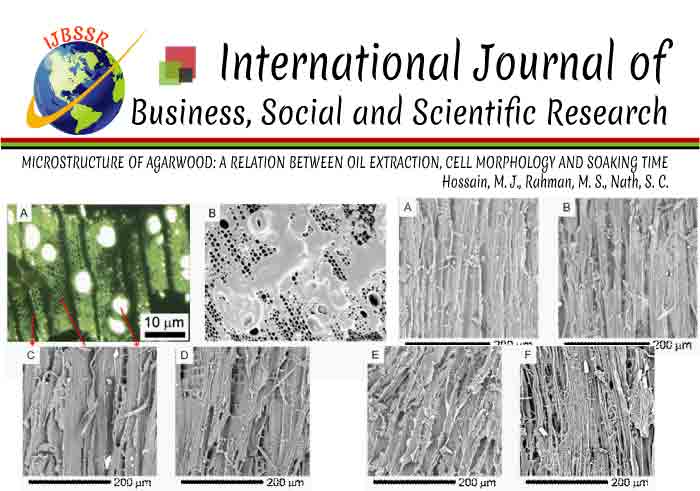MICROSTRUCTURE OF AGARWOOD: A RELATION BETWEEN OIL EXTRACTION, CELL MORPHOLOGY AND SOAKING TIME

A correlation between
oil extraction, cell morphology and soaking time behaviour has been studied
based on the microstructure of agarwood chips collected from Molvibazar,
Bangladesh. The tree was identified as Aquilaria Malaccensis (L). Resin was
produced by iron nailing method in the tree trunk. The hydration and chips
making effects were reflected from extracted oil yield and the required time. Microscopy
analysis was conducted to evaluate the microstructure of the agarwood in
relation to oil extraction, cell morphology and soaking time. Variable soaking
time (0 to 50 days) was analysed by its moisture content. Conventional water
distillation process was carried out for oil extraction and hence quantified
after 120 h for all samples. It is revealed that- (a) fresh wood does not
require for soaking, (b) semi-dried or dried wood give better extraction
efficiency after 10 to 20 days soaking, (c) longer soaking time destroy the oil
quality, (d) extraction time and efficiency are strongly dependent on the
thickness of the chips. These results are explained based on the morphology of
agarwood chips cells.

